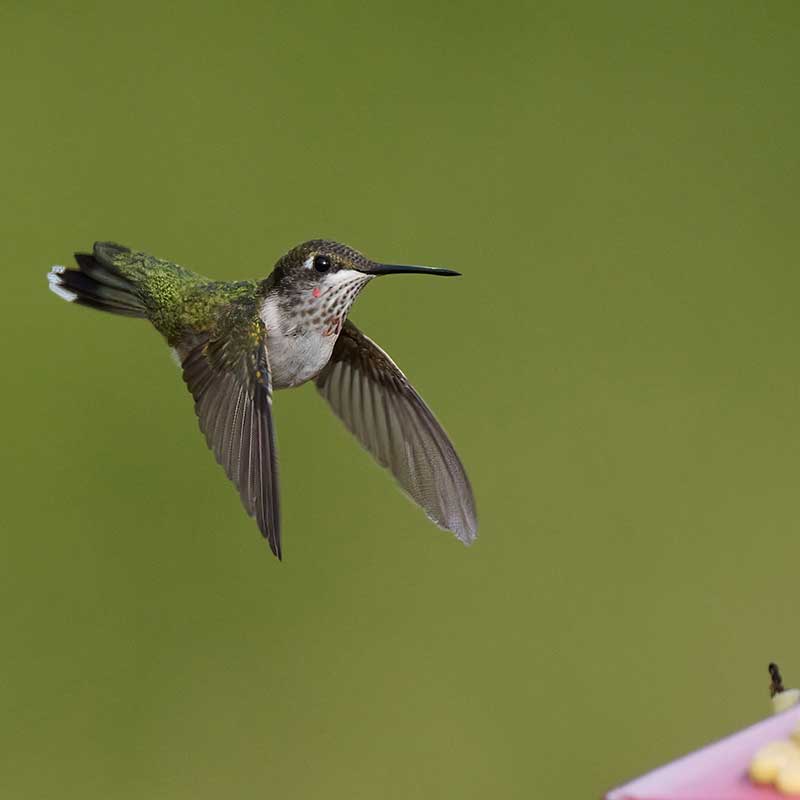Hummers Need Our Help
Hummingbirds aren’t often included in discussions about threatened bird species, but according to Birdlife International, 28 species of New World hummingbirds are now considered vulnerable, with at least 8 nearing extinction. Most of those, such as Juan Fernandez and the Sapphire-bellied hummingbirds, are found only in Central and South America. But several North American hummingbirds are also becoming species of concern.
Of the three species found west of the Rockies – Anna’s, Allen’s and Costa’s hummingbirds – the Allen’s population has declined by 83 percent since 1970, down to fewer than 700,000 individuals, and is still declining. The Rufous hummingbird has lost two-thirds of its population in the past 50 years, and is one of 70 bird species considered to be at Birdlife International’s “Tipping Point,” which means it is expected to become extinct in the next 50 years.
The Ruby-throated hummingbird, the only species that nests east of the Mississippi, has a population of 34 million and is not endangered, but pressure from human activity is causing an increased number of window collisions in its northern range, and drought in its wintering grounds in southern Mexico is also drastically reducing the bird’s food supply.
Threats to hummingbird survival are the same as they are for most bird species in decline: habitat loss from urban expansion; predation by domestic cats; window collisions, and pesticides. Setting up backyard hummingbird feeders (away from windows), applying window decals to make the glass visible to birds, and buying organic (i.e. pesticide-free) products such as coffee, cocoa and sugar, are measures we can all take this summer to protect migrating and resident bird species in our area.

Ruby-throated and other hummingbirds may soon depend on backyard feeders for their survival. Photo by Richard Cooper.
